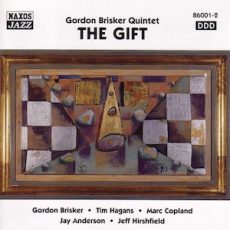
Daily Dose Of Jazz…
Gordon Brisker was born on November 6, 1937 in Cincinnati, Ohio and began on piano as a child. He studied reed instruments at the Cincinnati Conservatory of Music. Before enrolling in the Berklee College of Music he played with Ralph Marterie Following this he worked with Al Belletto, Bill Berry, and Woody Herman.
Moving to New York City he played with Louie Bellson and Gerry Mulligan. After a short time Brisker returned to Cincinnati, then moved to Los Angeles, California where he worked extensively as a studio musician.
From 1983 to 1985, Gordon taught at Berklee College of Music and during this time also arranged for Herb Pomeroy. After 1985 he returned to Los Angeles, recording extensively with Anita O’Day and Bobby Shew among others. He recorded several albums under his own name.
In the 1990s, Brisker moved to Australia and taught at the Sydney Conservatorium of Music. Tenor saxophonist Gordon Brisker died of pancreatic cancer on September 10, 2004 at the age of 66.
More Posts: educator,history,instrumental,jazz,music,saxophone
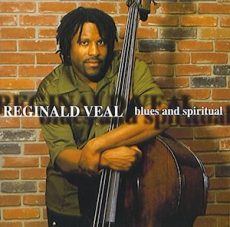
Daily Dose Of Jazz…
Reginald Veal was born November 5, 1963 in New Orleans, Louisiana. Growing up he began piano lessons at a very early age and received a bass guitar as a gift from his father at the age of eight. He went on to later join his father’s gospel group as the bassist.
Veal studied with the legendary New Orleans bassist Walter Payton, attended Southern University, studying bass trombone with clarinetist Alvin Batiste. From 1985 to 1989 he toured with pianist and teacher Ellis Marsalis as his bassist. During this time he also worked with Pharoah Sanders, Elvin Jones, Charlie Rouse, Hamiet Bluiett, Harry Connick Jr., Terence Blanchard, Dakota Staton, Donald Harrison and Marcus Roberts.
In 1987 he began playing in the Wynton Marsalis Quintet, which became the Wynton Marsalis Septet in 1988. He is the original bassist for the Lincoln Center Jazz Orchestra. Reginald has worked with Ahmad Jamal, McCoy Tyner, Branford Marsalis, Cassandra Wilson, Courtney Pine, Yusuf Lateef, Nicholas Payton, Eric Reed, Dianne Reeves, Junko Onishi, Mark Whitfield and Greg Tardy.
Bassist and multi-instrumentalist Reginald Veal resides on the West Coast where he continues to record and tour.
More Posts: bandleader,bass,history,instrumental,jazz,music
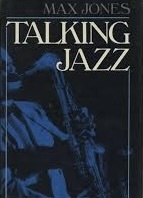
On The Bookshelf
Talking Jazz | Max Jones
Max Jones, known affectionately as “the Boswell of bebop” by Time Out, was famed in England for nearly four decades of insightful, ardent writing on jazz. With this luminous collection of interviews, his work will at last be widely accessible to American readers. Here are the voices of jazz — Coleman Hawkins, Johnny Hodges, Billie Holiday, and Mary Lou Williams, to name but a few — in conversation with Jones, who could turn a casual chat into an indelible portrait and who gives American readers a view of these musicians they have never had before.
In this book, the author Max Jones tells the story of jazz from its roots in the African-American community to its development as an international art form. Jones covers a variety of topics, including the development of improvisation, the influence of Louis Armstrong and Duke Ellington, and the rise of bebop. He also provides historical context and examines the different styles of jazz, from ragtime to free jazz. This book is an excellent resource for students interested in learning more about jazz and its history.; B & W Photographs; 8vo; 293 pages
Talking Jazz: 1987 | Max Jones
Anchor Brendon Limited
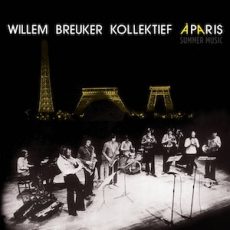
Daily Dose Of Jazz…
Willem Breuker was born on November 4, 1944 in Amsterdam, Netherlands. During the mid-1960s, he played with percussionist Han Bennink and pianist Misha Mengelberg. He co-founded the Instant Composers Pool (ICP) with which he regularly performed until 1973. He was a member of the Globe Unity Orchestra and the Gunter Hampel Group.
In 1974 Willem led the 10-piece Willem Breuker Kollektief, which performed jazz in a theatrical and often unconventional manner, drawing elements from theater and vaudeville. They toured Western Europe, Russia, Australia, India, China, Japan, the United States, and Canada. In 1974, he founded the record label BV Haast. Beginning in 1977, he organized the annual Klap op de Vuurpijl (Top It All) festival in Amsterdam.
Haast Music Publishers, which he also operated, published his scores. In 1997, he produced with Carrie de Swaan Componist Kurt Weill, a 48-hour, 12-part radio documentary on the life of Kurt Weill. In 1999, BV Haast published the book Willem Breuker Kollektief: Celebrating 25 Years on the Road, which includes two albums.
Bandleader, composer, arranger, saxophonist, and clarinetist Willem Breuker, who was knighted with the Order of the Netherlands Lion, died from lung cancer on July 23, 2010 in Amsterdam.
More Posts: arranger,bandleader,clarinet,composer,history,instrumental,jazz,music,saxophone
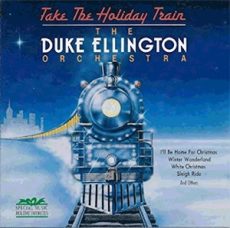
Daily Dose OF Jazz…
Quinten H. “Rocky” White Jr. was born in 1952 in Hays, Texas near San Marcos. When he was a child, the family moved to Houston. Graduating from San Jacinto High School, where he began playing drums, he attended Texas Southern University and played in the school jazz band. In 1970 he married his high school sweetheart, Erma Green.
While at TSU he met Barrie Hall, who in 1973 joined the Ellington orchestra. It was about a month later that Ellington told Hall he needed another drummer and asked if he knew of one and he recommended Rocky. Joining the orchestra in the summer of 1973, he was one of the last musicians that Ellington hired before he died in 1974.
Drummer Quinten “Rocky” White Jr., whose last appearance with the orchestra was a performance of sacred music in 2007 at Williams Trace Baptist Church, died from cancer on June 4, 2008 in Houston. He was 56.
More Posts: drums,history,instrumental,jazz,music



